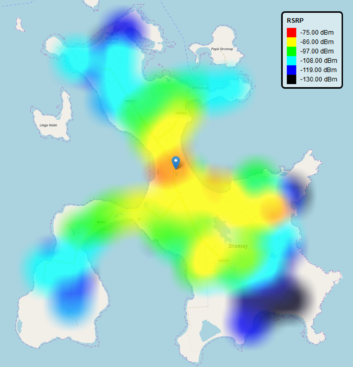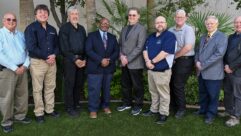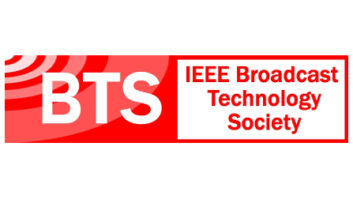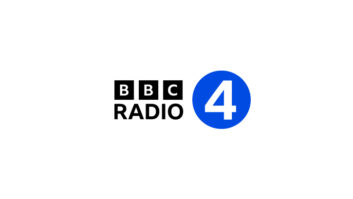STRONSAY, Orkney Islands, Scotland — BBC Research & Development extensively tested live radio broadcasts over a purpose-designed 5G network to assess the capability of the technology to successfully reach people living in rural areas.

These areas often suffer from inadequate radio coverage as well as low and unstable bandwidth on both fixed and mobile data connections.
IP FUTURE
The trial took place in Stronsay, a remote island in Orkney, Scotland, off the northern coast of mainland United Kingdom. Before the trial, islanders complained that it could take up to 10 minutes to download an email.

“We chose Stronsay because of its very limited existing coverage overall,” said Andrew Murphy, lead engineer for BBC R&D. “There is almost no mobile phone coverage, no DAB coverage and even the FM is not strong. It was definitely a good place to run a test.”
BBC R&D worked closely with the local council and authority. The test in the far reaches of Scotland is part of the “5G RuralFirst” (www.5gruralfirst.org), a government-funded initiative deployed at multiple locations across the U.K. to experiment with new approaches to connectivity in rural areas.
“We were interested in radio,” Murphy explained. “We wanted to assess whether people living in remote areas (where there is a lack of traditional AM/FM or digital radio reception) could access the medium through 4G and 5G and were able to listen to BBC radio programming live.”

Looking toward an IP future for media, BBC is aware that consumers are increasingly using smartphones to access content over mobile networks. The broadcaster is also active in EBU and 3GPP standardization committees.
“BBC needs to be able to test and understand the forthcoming technologies so that we can work on them and see how we can improve them where appropriate,” Murphy added.
BROADCAST MODE
BBC had some concerns about the capacity and coverage (BBC needs universal availability) mobile networks can effectively ensure. It questioned whether 4G and 5G technologies could potentially help broadcasters overcome these challenges.
Murphy said they decided to assess the delivery of radio through 4G and 5G broadcast technology because radio is a naturally mobile medium, and people enjoy listening to the radio on the move. At the same time, smartphones are increasingly not fitted with broadcast receivers.
Since no commercial 5G system was available, BBC decided to design and build its own base station, which Murphy’s team deployed in the center of the island at Stronsay Junior High School.
The base station (4G technology but designed to emulate 5G) was designed to give BBC engineers total control over transmission parameters, such as modulation and coding settings, and to alter them to assess performance in different situations. The trial used 2×10 MHz bandwidth in the 700 MHz band.

The trial featured the broadcast-mode delivery of radio over 4G (eMBMS with MPEG-DASH), enriched by mobile broadband to give listeners access to live (broadcast) and catch-up (unicast) content, as well as internet access, using a mixed mode in 3GPP Rel-12, providing both broadcast and unicast.
DETAILED TELEMETRY
The broadcast mode can reduce the amount of bandwidth needed to air the involved content since in this approach the base station is only sending one transmission rather than multiple versions (one to each different user).
This means that when many users request the same live program at the same time, broadcasting it over 5G helps reduce congestion on the rest of the network.
“We incorporated 13 live radio services, including BBC Radio Orkney.” Murphy explained “We recruited 20 people to use broadcast-capable handsets featuring 4G technology but designed to emulate some features we hope to see in the forthcoming 5G standards.”
The specifically designed handsets allowed the tests to achieve greater results than currently possible with equipment commercially available today. The handsets included Rel-16, LTE-based 5G terrestrial broadcast, SIM-free reception as well as transport-only mode with AAC+ audio over RTP/UDP/IP.

A dedicated app, built on standard BBC app components, powered the receiving device and comprised detailed telemetry data of reception quality as people listened to the radio services.
“This enabled us to build-up an anonymized, crowd-sourced coverage map across the whole island and to assess the performance of different transmission parameters on the quality of service,” said Murphy.
ALMOST SATISFIED

The distributed availability of the monitoring probes built into the receiving devices allowed BBC engineers to run an analysis over a much longer time period and over a wider area than drive testing alone would allow.
In addition, since the data came from real-life handsets, a more accurate picture of how the technology works in practice was depicted.
Across the 16 active handsets over the first five weeks of the trial, average broadcast listening measured at just over two hours per day, which would be the equivalent of around 1.5 GB of data over a month in the conventional unicast scenario.
“This a very significant proportion of the average monthly mobile data per active connection in the U.K. of around 1.9 GB per month and would leave little allowance for other uses,” he added.
The trial demonstrated that people liked the convenience of having radio readily available on a smartphone, and almost all (9 in 10) were satisfied with trial internet service. They often used the handsets as mobile hotspots, giving them access to faster download speeds for films and music.
BETTER OPTIONS
Anecdotal evidence from teachers at the island’s junior high school — backed up by data from the devices — suggests that teenagers in Stronsay have become big fans of the music played on the BBC’s Asian Network, one of the 13 BBC stations they could access as part of the trial.
In a BBC video illustrating its 5G project, Shona Croy, strategic advisor for Renewables and Connectivity at the Orkney Council said: “We were really keen to do something that overcomes this barrier of rural areas being last to get a service, or not getting it at all. But the economic case for coming here is poor, so are there other ways we can look at delivering services?”
5G as a technology is still being developed and deployed, and it has a completely different level of maturity with respect to, for example, DAB digital radio.
“The BBC will continue working in this space together with the European Broadcasting Union to try to influence current and future standards that provide broadcasters with better options for these purposes,” Murphy concluded.












